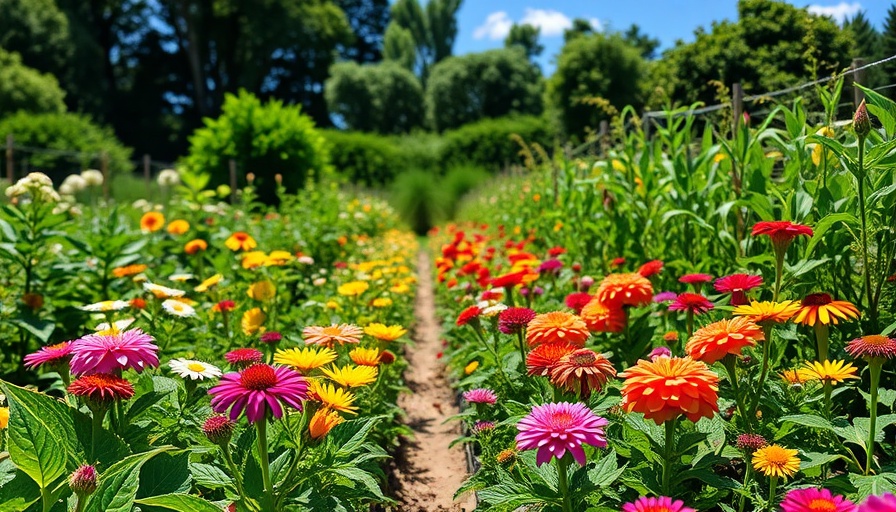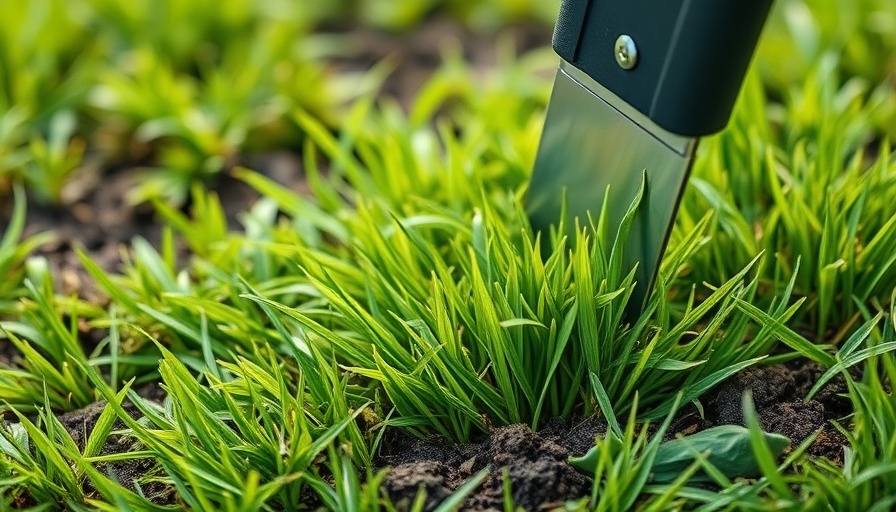
Understanding the Unique Challenges of Gardening in Minnesota
Gardening in Minnesota can feel like a delicate dance between frost dates and seasonal changes. Homeowners and small commercial property owners keen on maintaining appealing outdoor spaces face unique challenges due to the state’s varied climate zones. Understanding these factors not only influences the success of your garden but also enhances the aesthetic of your landscape.
Knowing Your Frost Dates Makes All the Difference
One of the most important aspects of a successful garden in Minnesota is awareness of local frost dates. In southern Minnesota, the last frost date typically occurs between late April and early May, while northern regions may not see the end of frost until mid-May or even early June. First frost dates fall between mid-September in the south to early October in the north.
This timing is crucial because planting too early risks frost damage to tender plants. For property managers and homeowners, it’s essential to plan your planting schedule based on these factors. For instance, a homeowner in Minneapolis, Sarah, may start sowing her peas in mid-April, while her northern counterpart, Jake from Duluth, waits until early May, ensuring they maximize their growing seasons.
Regional Variations in Hardiness Zones
Understanding Minnesota’s USDA Hardiness Zones—ranging from 3a in the coldest parts to 5b or even 6a in warmer areas—can significantly impact planting success. Property owners in northern zones, where winters are lengthy, often start seeds indoors and transplant them after the final frost. In contrast, southern homeowners can plant directly into their gardens sooner, taking advantage of a longer growing season.
According to the University of Minnesota Extension, planting dates can vary by up to two weeks between regions, making it critical for gardeners to know their specific zone. This knowledge allows for careful planning and seasonal lawn care that aligns with weather patterns.
Seasonal Planting Windows and Crop Selection
As seasons shift, so does the best time to plant various types of gardens. In Minnesota, early spring (March to April) is ideal for cool-weather crops. These include:
- Vegetables: Peas, spinach, lettuce, radishes, broccoli, and cabbage.
- Flowers: Annuals, such as pansies and snapdragons, can also be started indoors.
Homeowners planning their landscaping will find that utilizing cold frames or cloches can provide extra warmth for young seedlings during harsh early spring conditions.
Maximize Your Summer Growth
Summer months present an opportunity for vibrant growth, but they also require diligence in care. Regular watering, pest control, and nutrient management are essential to ensure that gardens flourish. For homeowners and commercial property managers, combining seasonal lawn care with traditional gardening can create lush, well-maintained outdoor areas.
Consider heat-loving crops and flowers during the warmer months, such as tomatoes and sunflowers, to bring additional brightness and visual appeal to your landscaping.
Planning for Fall and Winter
As summer transitions into fall, gardeners should prepare for the first frost. Planting late-season crops such as kale and Swiss chard can extend your harvest, while cleaning up your garden bed before winter helps prepare your landscape for a robust spring cycle.
For property managers, this period also serves as an opportunity to implement snow removal services and ensure all outdoor spaces remain functional during Minnesota's harsh winters.
Embrace the Beauty of Minnesota Gardening
A vibrant garden enhances not only the appearance but also the functionality of outdoor spaces. For homeowners and property managers, investing the time in understanding local gardening conditions can lead to beautiful results. It is an endeavor that pays off in terms of aesthetic and property value.
By embracing the seasonal shifts and challenges that gardening in Minnesota presents, you create an inviting environment that showcases your creativity and investment in your home or property.
For those looking to maintain or improve their garden's appearance and functionality, remember that staying informed is the key to a successful garden. Take proactive steps this planting season to ensure your outdoor space thrives all year long.
 Add Row
Add Row 
 Add
Add 


 Add Row
Add Row  Add
Add 
Write A Comment